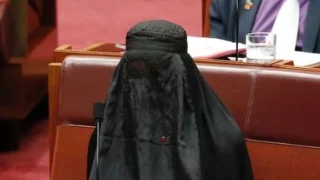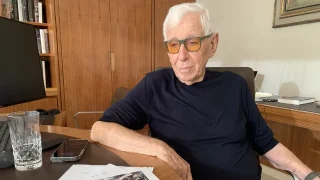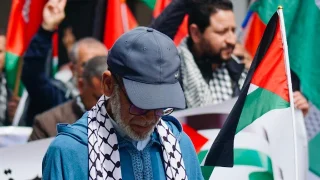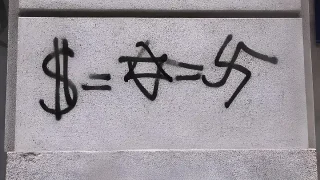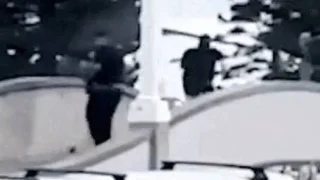
As prepared
I want first to thank the Centre for Independent Studies for the opportunity to be part of this event, with its rich tradition of provocative debate. I want to thank the team for organizing this, and for your wonderful welcome. Most importantly, I want to thank all of you for coming out to be part of this discussion.
My topic is “What are we fighting for? Islamism and the threat to liberal values.” I’m going to approach it through three questions that are simple to state, but extraordinarily complex to answer:
- What’s the ideology that drives groups like al Qaeda or the Islamic State?
- Where did ISIS come from?
- What should we be doing about it?
First, though, let me define my terms. By Islamic State, I mean the organization whose Arabic name is ad-Dawla al-Islamiyah fi ‘Iraq wal Sham, led by Abubakr al Baghdadi, now calling itself ad–Dawla al-Islamiyah or al-Khilafa, the Caliphate. I’ll use the acronym ISIS for this group, which fields more than 30,000 fighters. It controls a network of cities, populations and territory across about a third each of Iraq and Syria, owns economic assets that make it the richest terrorist group on the planet, and is expanding into the wider region, reinvigorating Islamist terrorism worldwide and radicalizing fringe members of our own societies, of whom thousands are fighting alongside the group.
When I use the word Islam, I mean the second largest religion in the world, with 1.6 billion followers, founded by the prophet Muhammad. “Islamic” refers to characteristics of that religion, and a “Muslim” is someone who follows it. Islamism, on the other hand, is a political ideology that seeks to propagate a particular form of the religion, shape society around it, and (often) use violence to force it on others.
Two other terms I’ll use are salafi-jihadist and takfir. A salafi is someone who emulates early Muslims, as-salaf as-salih, the righteous ancestors, hence “salafi”. The salafi movement arose in the 19th century as an effort to reassert a strict interpretation of Islam in the face of colonialism, and experienced a revival—which some call neo-salafism—after the failure of Arab nationalism and socialism in the post-colonial Middle East. There are millions of Salafis, most of whom don’t personally use violence, but some do use violence to spread their beliefs within the framework of a global religious war—a jihad—and we call that subgroup salafi-jihadist. Finally, takfir is the practice of declaring other Muslims as apostates, liable to be killed.
When I talk about liberal values, I’m not speaking of what people in the United States call “Progressive” politics, but about something older, more basic, namely the tenets of 19th and 20th century classical liberalism that shaped the societies we live in—individual freedom and accountability, civil liberties, limited government, the rule of law, free-market economics tempered by regulation, equality of opportunity, religious toleration, the removal of violence from politics. We differ about how to apply these ideas—how limited should government be, how much regulation is appropriate, what safety net should the state provide, how should we balance economic freedom with social justice—but these surface differences obscure a fundamental consensus in our societies around these values.
As I’ll point out later, this set of unexamined assumptions about what society is, how it should be organized, and the bounds of acceptable conduct within it—assumptions shared across almost the entire political spectrum in our countries—are utterly foreign to Islamism, even in its non-violent form. It’s precisely these values that salafi-jihadists seek to destroy by killing or terrorising all who hold them, and its these values that we ourselves can place at risk, depending on how we choose to react to the terrorist threat.
What’s the ideology that drives groups like al Qaeda and ISIS?
With that as context, what is ISIS? Is it just al Qaeda under another name? You could be forgiven for thinking that, if you listen to politicians talk about it. For diplomatic and legal reasons—because the U.S. Authorization for the Use of Military Force and UN Security Council Resolutions since 2001 were framed around al Qaeda—political leaders paint ISIS as an al Qaeda ally, but in fact the two are different. Let me explain, starting with al Qaeda.
al Qaeda’s ideology has three components, only one of which is religious: the notion of defensive jihad. This idea is that when infidels attack an Islamic state, a defensive war becomes legitimate, and in defensive jihad (as distinct from offensive jihad, which can only be ordered by a Caliph, and fought by professional armies in accordance with Islamic norms of war) every Muslim has an individual obligation to participate.
Al Qaeda tacks onto this religious concept a second element—a political interpretation of current events—namely that the encroachment of western culture, values, and foreign policy into the Muslim world (by which Islamists mean all Muslim-majority countries, all countries with significant Muslim minorities, all countries with Islamic governments and all territories ever, at any time, controlled by the historical Caliphate) is so hostile to Islam that it represents an attack on an Islamic world community (which they call the ummah), that this is tantamount to infidel invasion of an Islamic state, and therefore a worldwide defensive jihad—endless war, everywhere, against all non-Muslims—is in effect, and is obligatory on all Muslims. Osama bin Laden declared the global jihad in two speeches during the 1990s.
al Qaeda regards democracy—which organizes society around human rather than divine will, because individuals in democratic societies elect their governments, who set policies in line with public opinion—as idolatry, and holds every citizen of a democracy responsible for that country’s actions, those of its leaders (who every citizen elects) and of its allies. In other words, salafi jihadists hold every person here individually responsible for Australia’s actions and, by extension, those of the United States. In their view, that justifies violence against people we consider innocents—to them, in a democracy, there are no innocents because by voting in elections we are all responsible for our country’s policies. Further, some salafi-jihadists argue that modern connectivity is so pervasive, and the power of western ideas so insidious, that jihad cannot stop until every single person on the planet is converted or killed. Which, again, is all of us here tonight.
To state the obvious, this stretches to breaking point the idea of defensive jihad in Islam—it broadens beyond all recognition the meaning of “invasion”; it holds every democratic citizen (as well as any Muslim who adopts democratic ideas) responsible for this supposed invasion, and posits the global ummah as a virtual state (with al Qaeda at its head) in defence of which this jihad takes place.
I sometimes hear people ask: “If this idea’s so foreign to Islam, why don’t Muslims publicly reject it?” Actually, they have. Salafi-jihadist ideology has been repeatedly, publicly condemned by Islamic scholars and Muslim leaders worldwide. In 2005, for example, 200 Islamic scholars from 50 countries issued a religious ruling, the Amman Message, which condemned takfir and rejected jihadism. This message was reaffirmed in 2012.
The final element of al Qaeda ideology is military. Remember the first element is that defensive jihad is legitimate (the religious component), and the second is that this is a defensive jihad (the political). The final component argues that because the West supports Israel and “apostate” governments in the Muslim world, and because Western militaries are so strong, conventional warfare—formed armies fighting openly, force-on-force, following international laws of war—is hopeless. But it also sees Westerners as weak, easily exhausted and intimidated, reliant on technology, unwilling to die for their beliefs. Hence terrorism, the killing of civilians, the torture and enslavement of non-combatants, intimidation through violence, become not only acceptable, but the military method of choice.
This concept of a global guerrilla jihad led al Qaeda to a provocation strategy. Via the 9/11 attacks, al Qaeda sought to provoke a global religious war, dragging the West into protracted conflicts, exhausting our financial and military resources, sapping our political will, and ultimately forcing us to withdraw from the so-called “Muslim world”, leaving the field clear for a salafi jihadist takeover. Bin Laden outlined his strategy in 2004. He said:
“All we have to do is to send two mujahideen to the furthest point East to raise a cloth on which is written al-Qaeda, in order to make the generals race there, to cause America to suffer human, economic and political losses without achieving for it anything of note . . . so we are continuing this policy of bleeding America to the point of bankruptcy. Allah willing and nothing is too great for Allah.”
The idea was that intervention would bog us down in occupation warfare, which in turn would create a backlash that would allow al Qaeda to rally local groups (originally motivated by localized grievances) under the single explanatory narrative of a global Islamic jihad, and aggregate their effects into a worldwide uprising that would transform the planet, allowing a Caliphate to rise from the ashes.
Notice that the Caliphate for al Qaeda was a distant future goal, deferred until after military victory—at different times, salafi-jihadist leaders spoke of it as being in Egypt, in Mecca, or in Baghdad—and its very vagueness allowed it to serve a unifying function as a kind of millennial jihadist utopia. Notice also a certain amount of what we might call “magical thinking” here: the idea that however powerful the enemy, truly Islamic fighters would demonstrate commitment to Allah by their effort, and Allah in turn would provide the victory.
Thus while social movement theory, mass psychology and revolutionary warfare theory do indeed have something useful to say here, we can’t ignore the fact that Islam—a distorted version of Islam, to be sure, one most Muslims would scarcely recognize, a perversion perhaps, but Islam nonetheless—is fundamental to both the ideology and the strategy. There are plenty of murderous ideologies worldwide, but they’re not all the same. They reflect the ground from which they spring, and this one springs from Islam. To deny that just makes it harder to think clearly about the problem.
On the other hand, holding some thing called “Islam” responsible for terrorism is as much an over-reach as holding Japanese culture responsible for the atrocities of World War Two, or blaming all Communists for Pol Pot. It not only accepts the al Qaeda line that there’s just one undifferentiated “true” Islam, whereas in fact Islam is massively diverse. It also treats non-violent Muslims the same as those who use violence in contravention of the Prophet Muhammad’s words that “there is no compulsion in religion” (al-Baqara, 256). And of course, it’s a logical fallacy to expect a constant cause to explain a variable effect: if Islam alone caused terrorism, we would have seen the same level of terrorism since the tenets of the religion were settled a thousand years ago, but we haven’t seen that—so other factors must also be at play.
There’s a paradox here: on the one hand, only a tiny percentage of the world’s Muslims are involved in terrorist jihad. On the other, that jihad is real, it only takes a small number to sustain it, and of course everyone in it is a Muslim. This creates a fundamental tension—most Muslims aren’t jihadists, but all jihadists are Muslims—that can separate Muslims from society, create opportunities for authoritarian repression in the name of counterterrorism, and make every Muslim a target. It also creates a moral hazard: leaders of Muslim minorities in Western societies can demand special consideration, using the implied threat of violence by others as a way to get what they want, and that in turn can separate Muslims further from the rest of society. That’s what’s so insidious about this: not only terrorism, but also our reaction to it, can be equally destructive. I’d go further—our reaction has the potential to be vastly more destructive than the terrorism that gives rise to it. This paradox lies at the heart of al Qaeda’s strategy, in fact.
Now, this is an obvious point, but the global uprising that bin Laden sought did not occur. After 9/11, the international community came down on al Qaeda like a ton of bricks. They were expelled from Afghanistan, damaged in Pakistan, defeated in Saudi Arabia, allied groups in Somalia, Yemen and North Africa were (temporarily) set back, affiliates in Southeast Asia lost support, and al Qaeda in Iraq was almost destroyed—by 2010, we’d reduced them to 5 per cent of their strength and banished the remnant from all major Iraqi cities. U.S.-led coalitions stabilized Iraq and Afghanistan, only to see Iraq unravel after leaving, and Afghanistan looking quite shaky as we exit.
So, if al Qaeda’s strategy didn’t succeed, at least not in the way bin Laden intended, does that mean our strategy, the Global War on Terror, “overseas contingency operations”, worked? Well, unless you’ve been living under a rock, you would have to know that the answer to that question is a resounding NO. And that, of course, is because as al Qaeda has waned, we’ve seen the rise of ISIS.
Let’s talk now about that group. ISIS comes from the same basic salafi-jihadist worldview as al Qaeda, and shares much of al Qaeda’s ideology, including the notion of defensive jihad and the focus on terrorism. It’s in the second component—the political interpretation—that it parts ways with al Qaeda, and that results in a starkly different strategy, and a different set of threats to our societies.
ISIS is the successor to al Qaeda in Iraq. That might lead you to suppose that it was originally a branch of the wider al Qaeda movement, but actually its origin is independent. It came out of extremist circles in Jordan, propelled by anti-Shia sectarianism, and peaked in the intimately ferocious violence of the Iraq war.
Its first leader, Abu Musab al-Zarqawi, emerged after the invasion of Iraq in 2003, when he formed terrorist cells to oppose the occupation, allied himself with Sunni nationalist and former regime fighters, took up the al Qaeda name as a branding exercise, and carried out attacks like the killing of UN Special Representative Sergio Vieira de Mello in 2003, the beheading of aid workers, the kidnapping, rape and murder of Shi’a children, and the 2006 Samarra bombing.
Before he was killed in June 2006, Zarqawi unified several factions under the Islamic State of Iraq, part of the Mujahidin Shura Council, responsible for some of the most horrendous atrocities of the war. Zarqawi was succeeded by Omar al Baghdadi, himself killed in April 2010, to be followed by Abubakr al Baghdadi, the current leader of ISI, which expanded into Syria after the beginning of the Syrian Civil War, and now calls itself Islamic State.
It was soon clear that there were ideological and strategic differences between al Qaeda and Zarqawi’s group. These emerged through a series of letters between Zarqawi and Ayman al-Zawahiri, then bin Laden’s deputy, which fell into the hands of western intelligence in 2005.
Zarqawi viewed Shi’a Muslims and by extension their regional protector, Iran, as the greater threat. He saw Shi’a as apostates who should be slaughtered without mercy. He sought to provoke a sectarian civil war that would split Iraq, generate massive violence that would make the country ungovernable, drive out the occupation forces, collapse the state, and allow Zarqawi to inherit the wreckage. This translated into violence against Iraqi civilians, which for all its horror, was anything but random. Rather, it was designed to turn Shia and Sunni against each other, and both against the occupiers.
Zawahiri and al Qaeda differed, not in terms of rejecting violence against Shi’a, but as a matter of strategy and timing. Zawahiri wanted Zarqawi to first rally all Iraqis against the occupation, and defer action against the Shi’a until after the invaders were expelled. He said, in effect, “form a popular front against the occupiers, you can always deal with the Shia later”. This was the classic al Qaeda aggregation strategy we’ve discussed, with a view to a global rather than a local agenda.
Zarqawi and his successors reject that—not because they’re less opposed to the West, far from it, but because of a difference in strategic sequencing. They want to provoke an immediate sectarian war with the Shi’a, use that to unify Sunnis behind them, establish the Caliphate, build a powerful Islamic state, and then expand its territory by military conquest. What, for al Qaeda, is a distant millenarian utopia, is for ISIS an immediate, concrete, practical goal.
That means a real state—with a territory, an army, a government, an economy, a population—and that makes ISIS a much more conventional state-building enterprise. Unlike al Qaeda with its post-modern notion of a virtual, non-territorial state, of guerrilla cells acting locally while thinking globally, and its call for an uprising by Muslims everywhere, ISIS wants the Caliphate now, as a real-world entity, in one territory, and then plans to expand it by military conquest. To use a Cold War analogy, if al Qaeda are Trotskyist, calling for world revolution, ISIS are Stalinist—socialism in one country.
That’s why, whereas bin Laden said, “if you support al Qaeda, attack Westerners wherever they may be”, and sought to provoke our intervention in local conflicts so as to generate a global insurgency, al Baghdadi said “if you support ISIS, come to Syria and help us build the state.” He put out a call for doctors, engineers—and, of course, fighters—to join him. Far from wanting to provoke Western intervention, ISIS wants breathing space. It’s ultimately no less hostile to the West, but its sequencing is different: first build the Caliphate, then expand it, then take on the West. You can see the difference in al Qaeda’s English-language magazine, Inspire, which is full of tactical tips, articles on bomb-making, how to attack western societies from within, whereas the ISIS magazine, Dabiq, is full of propaganda about Syria and Iraq, and calls for people to travel to join the fight.
If al Qaeda’s agenda is 21st century, ISIS looks, to many of my friends in Iraq and Syria, a lot like the 7th century. After Muhammad’s death in 632AD, his successors—the Caliphs—engaged in a campaign of military expansion that took them within a few decades to control vast territories in the Middle East, North Africa, South and Central Asia, and eventually into Spain and Southern Italy. These wars of Muslim Conquest, as they’re known, created the largest pre-Modern empire in history. The restoration of this Caliphate—as contrasted with the al Qaeda “virtual” Caliphate—lies at the heart of the ISIS agenda.
ISIS has had a massively reinvigorating effect on the global jihad. We’ve seen groups in Indonesia, the Philippines, North Africa, and across the Middle East revive. Fighters have travelled to join ISIS from these areas, and from Europe, North America, Australia and New Zealand and Latin America—indeed, foreign fighter flows into Syria and Iraq are ten times what we saw at the height of the Iraq war.
Where did ISIS come from?
How did ISIS come to join al Qaeda at the peak of the global jihad? It resulted from two key events: the killing of Osama bin Laden, and the failure of the Arab Spring. Bin Laden’s death on the 2nd of May 2011 threw al Qaeda into disarray. The organization went through a succession struggle, and turned inward for several months before Ayman al-Zawahiri emerged as undisputed leader. Those months were critical, because mid-2011 was when the Arab Spring seemed to be succeeding—secular, democratic, largely peaceful protest movements in Tunisia, Egypt, Libya and Yemen had successfully thrown off dictatorships. For a time, this seemed to contradict al Qaeda’s argument that only terrorism against the West (the “far enemy”) could overthrow these regimes (the “near enemy”).
But by late 2011, it was clear the Arab Spring was not going to deliver stable democracies. Egypt slipped back into authoritarianism, Yemen remained hugely violent, Libyans threw off Gaddafi but were left with an increasingly violent power vacuum, and a crackdown in Bahrain crushed protests there. Most importantly, in Syria, the early promise of a peaceful end to the Iranian-backed Damascus regime failed, the regime consolidated, and protests escalated into a horrific sectarian civil war.
So peaceful methods failed (except in Tunisia, site of the original outbreak and, seemingly at present, the exception that proves the rule) and insurgencies emerged in Syria, Libya, Egypt’s Sinai desert, and Mali. al Qaeda, as I’ve mentioned, was in disarray: the Arab Spring seems to have caught them flat-footed. So as people turned back to violence, they didn’t look to al Qaeda: the group had lost credibility. That gap was increasingly filled by ISIS.
ISIS, for its part, used Syria to reinvent itself after its defeat in Iraq. You recall the organization was down to only 5% of its strength by late 2011, it was scattered, on the run from U.S. and Iraqi forces. As the Syrian revolution unfolded, Abubakr al-Baghdadi sent a small cadre to Syria. They found sanctuary from pressure in Iraq, they could regroup and re-equip, and because of their battle experience, their financial backing from salafi donors, their tight organization, and their concrete, specific political program, they began to dominate. Three factors helped: the Assad regime, the West’s failure to support the secular democratic uprising, and the Iraqi government in Baghdad.
In Syria, Assad claimed his opposition consisted entirely of jihadists. At first this was a lie: the same broad-based, secular, pro-democracy movement arose in Syria as elsewhere in the Arab Spring. But the violence of Assad’s crackdown turned protest into insurgency. Civil leaders were sidelined, armed groups began to grow, the movement became more extreme, and Assad’s lie became increasingly true. He maintained a de facto truce with ISIS until late 2013—the rise of ISIS helped prove his case about a jihadist enemy, ISIS spent most of its time attacking other rebel groups anyway, and avoided confronting the regime directly, so Assad in turn let ISIS gain control of Raqqa. Raqqa today is the ISIS capital, its major base, home to hundreds out of the thousands of foreign fighters who have flocked to join it.
The second factor was our failure to support Syria’s democracy movement. It’s a self-serving myth that there was never a chance for the democracy movement to succeed. The democratic opposition to Assad was long-standing, it had significant popular support, and it was far stronger and better organized than Gaddafi’s opposition in Libya. Firm diplomatic pressure by the West in 2011, military support to democracy groups in 2012, and deterrent strikes against Assad when he began using chemical weapons against his own people in late 2012 and early 2013 could have made a real difference.
Instead, we were tied up in Libya in 2011, gave virtually no support to the democracy movement, and offered too little help, too late, to the secular rebels. I’m not suggesting we should have invaded Syria—but I am suggesting that Western diplomatic efforts to ensure a political transition, backed by force if necessary to stop Assad’s violence against his people, in accordance with the established international principle of Responsibility to Protect, would have done a lot to prevent the emergence of ISIS. Even now, because Western countries have refused to come out strongly against Assad, and have yet to target any regime positions, many Syrians see our efforts as helping the regime. Few Syrians will back us against ISIS until we commit to overthrowing Assad, which for them is the whole point of the uprising.
The final factor was the Iraqi government’s lurch into sectarianism at the end of 2011. It’s easy to blame Prime Minister Nuri al-Maliki here. I’ve heard people ask “What happened to Maliki? How did he go from being inclusive in 2007-8 to being sectarian in 2012”? That question bespeaks a lack of understanding of conditions in Iraq. Yes, Maliki was relatively inclusive in 2007-8: but that was when we had 165,000 U.S. troops in country, advisors embedded throughout his government and security forces, and were spending billions in assistance—we had huge leverage, and could ensure fair treatment for Sunnis, Shi’a and Kurds. Remember the Sunni community, by turning against al QaedaI (now ISIS) during the Awakening, enabled a massive reduction in violence, allowing us to stabilize Iraq and start withdrawing. After the coalition withdrew, leaving zero troops behind, pulling out civilian advisers and cutting off assistance, we lost leverage. For his part, Maliki no longer had us to act as mediator or ensure fair outcomes. He was in a zero-sum game, where he could no longer afford to be inclusive—he had to consolidate his Shi’a support base, and seek Iranian support. He reneged on his deals with Sunnis and Kurds, and started sidelining professional military, police and administrative officials, and replacing them with sectarian (often corrupt) loyalists.
As a result, by 2013, Iraq was in disarray, Kurds and Sunnis felt betrayed by Baghdad, tribal elders had been hung out to dry, the Iraqi security forces were engaged in what Sunnis saw as a sectarian version of ethnic cleansing, and there was space for a return of ISIS. And that created the environment that allowed the ISIS expansion in 2013, its jailbreaks, seizure of cities, expansion in Iraq and Syria, and its blitzkrieg-like breakout to Mosul and other cities in June 2014.
What should we do about it?
If that’s the threat, what should we do about it? We need to consider both the threat from Islamist terrorism, and the risk arising from our own reaction to that threat.
We can break the terrorist threat into four components: domestic radicalization, foreign fighters, the effect on regional terror groups, and destabilization in the Middle East. Our strategic approach needs to address all four and, I would argue, in that order of priority.
So, domestic radicalization first. What we see in Western societies is the seductive pull of ISIS on marginalized people, who feel themselves disenfranchised, losers in our society, and want to be part of something huge, successful, historical and important—ISIS offers them all that, a chance to validate themselves through action.
Western governments since 9/11 have had a bad habit of orientalising Muslims, treating them as a special case, as an exotic, potentially violent minority, who need to be handled with kid gloves. Often governments have sought to deal with Muslims through traditional elders, appointed (sometimes self-appointed) leaders who the government treats as intermediaries, hoping they will keep their young men and women in line.
This has three really bad effects. First, these so-called elders are often, by definition, more conservative, authoritarian and traditionalist, and by deferring to them we’re deepening the marginalization of young Muslims. Secondly, as I said earlier, there’s a moral hazard—people are encouraged to seek special treatment, to set themselves apart from the rest of society, leveraging the existence of extremist crazies as a way to advance their own agenda, and that tends to move entire communities in a more sectarian, segregated direction, and creates divisions in society that extremists can exploit. Finally, it creates the impression that a whole community is responsible for the actions of a lunatic, criminal fringe.
I think we need to do away with this approach. Repression, surveillance, and special intermediaries simply make the problem worse. We need to treat Australian Muslims like Australian Catholics, Australian Hindus or any other Australian—with all the rights, freedoms, expectations and responsibilities that come from free membership in a free society. If people engage in criminal acts, they need to be treated like any other criminal. We need to open up opportunities for self-expression and free agency within our own societies, so people can see that the answer to their problems lies here, not elsewhere. The answer to domestic radicalization, then, turns out to be more freedom, not less.
Likewise, though, with freedom comes responsibility. We need to be clear that we don’t plan to turn our societies inside out in order to make a disaffected minority more comfortable. The liberal values that lie at the heart of our society, on which our country is built, are not up for discussion. We can’t afford to be tolerant of intolerance, or to allow the implied threat of terrorism to let a minority (any minority) hold the rest of us to ransom.
The second threat is that of foreign fighters, and here the risk is that members of our own societies will join ISIS or al Qaeda, reinfiltrate back into our communities, and carry out attacks here. This threat is real, but we need to measure our response carefully lest we do more harm than good. I often hear people say “why do we need to intervene overseas? Let’s just pull up the drawbridge, take defensive measures to protect ourselves against domestic terrorism, and leave it at that.”
I’m afraid that approach doesn’t really work. In the first place, there is no drawbridge. Australia is an open society, connected with the rest of the world, and our freedom and prosperity depends on maintaining that openness. Secondly, we need to be clear about what truly effective “defensive measures” would look like. These might include mass surveillance, collection of personal data, suppression of dissent, limits on free discussion, tracking of individuals on suspicion, detention without trial, travel and financial restrictions, and a pervasive police and security presence including fortified checkpoints in public places, heavily armed police and gun-carrying intelligence services with the power of arrest or to use lethal force. Since 9/11, many western countries have moved well on the way to some of these things in the name of protecting ourselves against terrorism. We may destroy our free and open society in order to save it: a fully protected society looks a lot like a police state.
There’s a stark trade-off here. To put it one way, how many terrorist attacks, bombings or assassinations are we prepared to accept as the price of preserving our freedom? Conversely, how much privacy, freedom and civil liberty are we prepared to surrender in order to prevent those attacks? You can’t have your cake and eat it too. In a democracy, this is a decision that only the people can make. Technocrats—especially security professionals whose budget and advancement depend on the outcome, or politicians who know they will shoulder the blame for any attack—can’t be allowed to decide this for us. At the same time, if society decides a certain level of risk is acceptable, we can’t go back and retrospectively change our minds after the event, retroactively punishing security officials or political leaders for risk-management decisions we made as a society. What we need is a public, informed debate on this set of trade-offs, along with safeguards to protect ourselves and against unintended consequences.
The third threat—the effect on regional terrorist groups—is something that Australia has done well since 9/11, and where current policy seems pretty well calibrated. Assistance to regional partners, information sharing, cooperation on regional security preparedness, and joint investigation when incidents occur, are all things that have been in place since 2003, after the first Bali bombing, and they have largely been effective in our region. We need to think about widening that regional network, and about how to react to increased threats, but in general terms I think we have those settings about right.
The final threat—the destabilizing effect of ISIS in the Middle East and North Africa—is the one against which our troops are currently engaged in Iraq. To me, the logic of this is extremely clear. We’ve already talked about how attractive ISIS is to disaffected elements within our own society. It has an appeal precisely because of what seems to be an unbroken string of military victories, because it seems t successful, and it offers people the chance to share in that success and significance. We can turn our society upside down in order to deal with the threat from this side, or we can go to where ISIS is—currently, the Middle East and parts of North Africa—and inflict damage on the group that takes the shine off of it, shows people it can be defeated, and emphasizes that joining ISIS is a fool’s errand, it’s pretty dangerous over there, and you might not make it back. If we want to limit the restrictions to our freedom in this country, and relax those restrictions before they become permanent, we MUST deal with ISIS where it currently is.
I am emphatically NOT talking about reinvading and reoccupying Iraq—that was a disaster the first time around, and doing it again wouldn’t make it any better. I’m also not talking a campaign destroy Assad militarily. I’m talking about a targeted effort using a combination of air power, special operations, military assistance and a limited number of combat troops to destroy the capacity of ISIS, break up the state it’s creating, encourage local opposition to take it down, and put enough pressure on Assad to force a negotiated settlement to the Syrian civil war, one in which secular democracy, with international support, plays a key role.
I want to end with two concluding observations. The first is to re-emphasize something that I, and others, have been saying ever since 9/11, namely that this is a long war, a multi-generational struggle between two fundamentally opposed sets of values. It has already gone on for half a century, and it has just as long to run.
One mistake we made after 9/11 was to focus too narrowly on al Qaeda, as if killing senior leaders equated to defeating the organization, and as if defeating al Qaeda equated to ending the terrorist threat. Let’s not make the same mistake again with ISIS. We will defeat ISIS, I have absolutely no doubt about that. But if we don’t also think more broadly, across all four of those threat categories, we’ll find ourselves back here again in another few years. Worse than that, al Qaeda hasn’t gone away, it’s eclipsed but far from defeated, and there’s every possibility it will compete with, or even partner with, the remnants of ISIS in the next phase of this long conflict.
If we want to succeed in that conflict, we MUST find ways to deal with the threat that are cheap enough, non-intrusive enough, and sustainable enough, that we can maintain them essentially indefinitely, without destroying the free society we seek to protect.
And that’s my final point. I’ve spent a lot of time tonight speaking about what we’re fighting against, the enemy’s ideology and strategy. But let’s remember what we’re fighting for, those values on which our society is founded, and on which—whatever else we might disagree on—we have wide consensus.
We believe in individual freedom, and the personal responsibility that comes with that. We believe in the pursuit of happiness, the sanctity of human life, in a secular state whose authority derives from consent of the governed, and whose purpose is to serve the needs of its citizens. We believe in a free market economy, as tempered by appropriate regulation, and in the rule of law as established by human society. We believe in respect for the rights of others, in gender equality including women’s autonomy, reproductive freedom, and freedom of sexual relations between consenting adults. We believe in social justice based on equality of opportunity and access, and in human progress through innovation and creativity.
Yes, we disagree among ourselves on how to balance these values, and on what form they should take, and on their relative priority. But let’s recognize how utterly, and unalterably foreign these beliefs are to salafi-jihadists like al Qaeda, ISIS, or any of their fellow travellers, including even those who don’t actively use violence. Intolerance of difference, religion as a total explanation for all aspects of life, communal over individual purpose, the imposition of beliefs on others by force, the subjugation and oppression of women, a cult of death perpetrated by a hyperviolent nihilistic band of exterminators, a theocratic state whose authority derives from Allah rather than from its people, a non-rational cult of authority, intolerance of sexual or gender freedom, hostility to innovation and progress, and a return to the supposedly righteous ways of the seventh century.
ISIS and groups like it are horrendous, but they’re not unique: in some ways, they’re just the latest in a long line of ideological enemies of liberal democracy, foes of the enlightenment that go back to 18th century Absolutist monarchism, Clericalism, and Authoritarianism, to 19th century ideas like Slavophilism and Communism, and to 20th century movements like the Nazi racial community of blood and soil, Fascism, Japanese militarism, or Stalinism. Today’s threat will go the way of those historical threats, I have no doubt about that—but it won’t happen without effort from all of us, a conscious effort to preserve our freedoms here at home, and to extend those freedoms to ALL members of our society, even as we defend them abroad.



